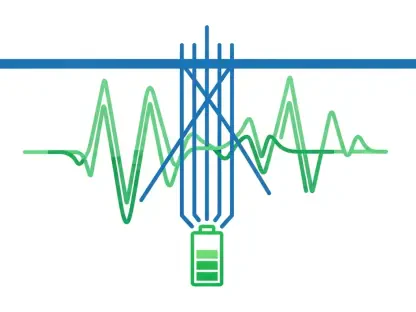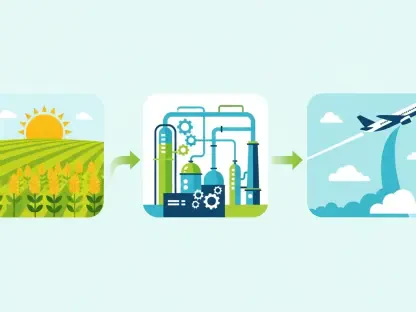In the breathtaking expanse of Ethiopia’s Western Highlands, where rolling hills and rugged terrains define the landscape, the Agaw people have long thrived through a profound connection to their land, relying on traditional ecological knowledge for generations. They have employed sustainable practices such as terracing and rotational grazing to nurture the soil and ensure bountiful harvests. Yet, the escalating impacts of climate change, marked by severe droughts and rampant soil erosion, have posed unprecedented threats to their agricultural heritage. Amid these adversities, a beacon of hope shines through the adoption of solar power, which is seamlessly blending with ancestral farming methods. In the Ankesha Guagusa district, solar-powered irrigation systems are empowering the Agaw to combat environmental challenges while safeguarding their cultural identity, presenting a compelling narrative of resilience and innovation. This harmonious integration not only addresses immediate needs but also sets a precedent for sustainable development that respects historical wisdom. It showcases how modern technology can amplify rather than overshadow time-honored practices, offering a glimpse into a future where tradition and progress coexist. The story unfolding in these highlands is more than a local triumph; it’s a potential model for communities across the Global South facing similar struggles.
Harnessing Solar Energy for Agricultural Resilience
The introduction of solar-powered irrigation systems in the Ankesha Guagusa district marks a transformative chapter for the Agaw community’s agricultural practices. These systems utilize solar pumps to extract water from underground sources and nearby rivers, ensuring a consistent supply for crops even during the harshest dry spells. This technology complements the traditional terracing methods long practiced by the Agaw, which are designed to slow water runoff, retain moisture, and prevent soil erosion. The synergy between these modern tools and ancient techniques has resulted in a significant boost in crop yields, allowing farmers to cultivate year-round in a region plagued by unpredictable rainfall. This integration serves as a powerful testament to how renewable energy can enhance sustainable farming without disrupting established ecological balances. Beyond mere functionality, the adoption of solar power reflects a broader commitment to preserving the land for future generations while adapting to pressing climatic challenges. The increased productivity not only secures food supplies but also strengthens the economic stability of households, offering a buffer against the uncertainties of nature.
Furthermore, the impact of solar irrigation extends beyond immediate agricultural gains, fostering a renewed sense of hope among the Agaw farmers. With access to reliable water sources, many are now experimenting with diverse crops that were previously unfeasible due to water scarcity, thus enriching dietary variety and market opportunities. This shift is particularly crucial in an area where drought has often forced reliance on limited staple crops, leading to nutritional gaps. The technology also reduces dependency on erratic seasonal rains, providing a safety net that enables planning and investment in long-term farming strategies. Importantly, this approach respects the cultural framework of the Agaw, ensuring that innovations are not perceived as foreign impositions but as tools that enhance their way of life. The success seen here highlights the potential for renewable energy to address global food security challenges, especially in vulnerable regions where climate change hits hardest. It underscores the importance of tailoring technological solutions to fit local contexts, ensuring they are both effective and culturally resonant.
Community-Driven Innovation and Cultural Alignment
At the heart of solar power’s success among the Agaw lies a deep commitment to community involvement in the design and implementation of these systems. Farmers in the Ankesha Guagusa district have taken an active role in adapting solar irrigation to align with their seasonal knowledge and traditional ecological practices. By determining when and how to use the pumps based on ancestral understanding of weather patterns and soil conditions, they ensure that technology serves as an enhancement rather than a replacement for existing methods. This participatory approach fosters a strong sense of ownership, as the community views solar power as an extension of their heritage rather than an external imposition. Such engagement has been pivotal in building trust and acceptance, ensuring that the systems are used effectively and sustainably. The result is a model of innovation that prioritizes local expertise, demonstrating that solutions are most effective when driven by those who understand the land best.
Equally significant is the cultural alignment that underpins the adoption of solar technology in this region. The integration respects the spiritual and ecological values central to Agaw identity, creating a seamless bridge between past and future. Community members often express pride in seeing their traditional practices amplified by modern tools, describing the combination as a “living infrastructure” that honors their history while addressing contemporary needs. This harmony is not merely symbolic; it plays a critical role in the long-term viability of the initiative, as cultural acceptance reduces resistance to change. By embedding solar power within the fabric of their daily lives, the Agaw ensure that innovation strengthens rather than erodes their way of life. This balance offers valuable lessons for other Indigenous communities seeking to navigate the intersection of tradition and modernity, highlighting the importance of cultural sensitivity in technological interventions. It serves as a reminder that sustainable development must be rooted in respect for local identities and histories.
Advancing Gender Equity Through Solar Solutions
One of the most tangible benefits of solar irrigation for the Agaw community is the profound impact it has had on women’s daily lives. Traditionally tasked with fetching water over long distances, women in the Ankesha Guagusa district have found significant relief through the availability of solar-powered pumps. This reduction in physical labor frees up time for other essential activities, such as tending to family needs, engaging in income-generating tasks, or simply resting. The alleviation of this burden has improved overall quality of life, allowing women to contribute more actively to household and community development. However, while the practical advantages are clear, the deeper challenge of ensuring that these benefits translate into broader empowerment remains. The technology’s potential to transform gender roles is evident, yet it requires deliberate efforts to fully realize such change in a context where traditional norms often dictate limited roles for women in agricultural innovation.
Despite the advantages, a critical gap persists in the equitable distribution of decision-making power related to solar technology. Women in the community are frequently excluded from discussions about the management and maintenance of irrigation systems, limiting their influence over how these tools are integrated into farming practices. Recognizing this disparity, local organizations have initiated programs to train women in technical skills and leadership, aiming to amplify their voices in community planning. These efforts are essential for ensuring that the benefits of solar power do not inadvertently reinforce existing inequalities but instead promote a more inclusive framework for progress. True sustainability, as emphasized by advocates, hinges on addressing social dynamics alongside technological advancements. By empowering women to take active roles in the stewardship of solar systems, the Agaw community can set a precedent for equitable development that other regions might follow, ensuring that innovation uplifts all members of society.
Cultural Pillars Supporting Renewable Energy Adoption
A unique and powerful driver of solar power acceptance among the Agaw is the role of cultural institutions, particularly the local Orthodox Tewahedo churches. In places of worship like St. George and St. Michael within the Ankesha Guagusa district, solar panels have been installed to provide clean electricity, reducing reliance on firewood for lighting and other needs. This shift aligns with spiritual teachings that emphasize stewardship of the earth, lending a sacred dimension to the adoption of renewable energy. Community leaders, including respected priests, have endorsed solar technology as a means to protect the environment, framing it as a moral imperative. Such endorsements carry significant weight, as these institutions are deeply embedded in daily life and trusted as moral guides. Their support has helped legitimize solar energy, encouraging wider acceptance by presenting it as consistent with longstanding values of care for creation.
Beyond symbolic importance, the practical benefits of solar installations in churches resonate strongly within the community, especially among women. The reduction in firewood use cuts down on the time and effort spent gathering fuel, while also contributing to forest conservation in the surrounding highlands. For many, seeing solar power integrated into sacred spaces serves as a compelling model, demonstrating that renewable energy can fit seamlessly into everyday routines without clashing with cultural norms. This cultural anchoring has accelerated the normalization of solar technology, as community members witness its alignment with both practical needs and spiritual principles. The influence of these institutions underscores the importance of leveraging trusted local frameworks to drive technological transitions. It offers a blueprint for other communities, showing how cultural touchstones can catalyze sustainable change by bridging traditional beliefs with modern solutions.
Pathways to Sustainable Scaling and Future Impact
Reflecting on the journey of the Agaw people in Ethiopia’s Western Highlands, the integration of solar power with traditional farming methods stands as a remarkable achievement in the face of climate adversity. The adoption of solar irrigation systems in the Ankesha Guagusa district proved to be a lifeline, enhancing agricultural productivity by ensuring water access during droughts and complementing ancestral practices like terracing. This synergy not only bolstered crop yields but also preserved the cultural fabric of the community, with local knowledge guiding the technology’s application. The endorsement from cultural institutions, such as churches, played a pivotal role in normalizing renewable energy, while efforts to include women in decision-making laid groundwork for social equity. Despite challenges like high costs and maintenance hurdles, the initiative demonstrated that resilience could be achieved through a blend of innovation and heritage.
Looking ahead, the next steps for this transformative model involve addressing barriers to scalability to ensure its benefits reach more households. Policymakers and development partners should prioritize affordable financing options and subsidies to lower the upfront costs of solar systems, making them accessible to a broader segment of the Agaw population. Additionally, establishing local training programs for maintenance and repair can mitigate logistical challenges, ensuring long-term functionality. National frameworks must also recognize and integrate traditional ecological knowledge into energy planning, valuing Indigenous solutions alongside technical advancements. By fostering inclusive governance that amplifies women’s voices and supports community-led design, the success seen here can inspire similar initiatives across the Global South. This approach promises a future where sustainable development honors historical wisdom while embracing modern tools for enduring impact.









